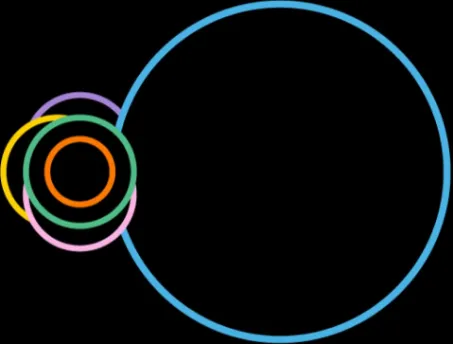A fast, modern and reliable network is a critical factor to success in convergence. Due to great differences in the competitive environment, the technological options related to population density, our market shares and customers’ needs, we use a local approach in our activities, which varies in big cities, medium to small towns and rural areas. In big cities we focus on development of fibre coverage and recovery of market share in fixed broadband by capitalising on our excellent position in the mobile market. In rural areas, mobile technologies, supplemented by fixed ones, are the primary broadband access solution.
We extend the fibre coverage not only by building completely new networks, but also using our previously built network, on which we launch additional fibre coverage for neighbouring households with low effort (coverage density increase), which previously were not covered by fibre access. Such action allows us to better manage our existing resources, improve financial results and increase customer satisfaction.
We use all possible channels of contacts with customers and our subcontractors to improve the quality of provided services, which is reflected in NPS results compared to other operators. We implement modern technologies to monitor orders by customers, contact our service technicians (using a mobile application) and base our activities on modern BI / data solutions.
Anticipating ‘the new normal’ after the COVID-19 pandemic, we have been developing new technical possibilities for our customers, giving them the chance to use our services and fix problems in the self-service mode (or with the remote support of our advisors) – which meets the customers’ demands and is the part of our .Grow strategy.
Since 2015, in line with the previous strategy, we have focused on massive development of FTTH lines. By the end of 2020, we had delivered on our strategic ambition to deploy fibre to 5 million households – almost one-third of all households in Poland. At the end of 2021, over 5.9 million households in 211 Polish cities were connectable with fibre.
We also use the infrastructure of other operators to expand the reach of our fibre services. Where it is technically possible and economically viable, we enter into wholesale agreements with other fibre network operators for the efficient use of the existing infrastructure in the relevant locations. The main benefit is quicker access to the FTTH network. This is in line with the aims of the Cost Directive of the European Commission, which recommends avoiding duplication of the existing facilities. At the end of 2021, we used the infrastructure of over 50 operators for 2.2 million households (including Światłowód-Inwestycje).
In our new .Grow strategy framework, we will further significantly increase the reach of our fibre, which is one of the key drivers of value creation and expansion of convergent services. However, contrary to previous years, we will be more reliant on partnerships, while our own network rollout will be limited to projects implemented within the Digital Poland Operational Programme. One of the key partnerships is the one with Światłowód Inwestycje, which is expected over the next few years to deploy fibre network in low- and mid-competition areas to 1.7 million households.
Orange Polska is Poland’s largest wholesale service provider. The demand for transmission bandwidth is growing, especially for n×1 and n×10 Gbps lines. To meet these needs, Orange Polska has continued to expand nationwide OTN (Optical Transport Network) trunk lines. In 2021, we increased the number of OTN transport nodes, thus expanding the aggregate network capacity from 7 Tbps at the end of 2020 to 10 Tbps at the end of 2021.
Orange Polska is Poland’s sole operator of the network to which all the Emergency Communication Centres (ECCs) are connected – the services answering calls to the emergency numbers 112, 997, 998, 999 and eCall. About 90% of all emergency numbers in Poland (over 500 locations) are connected to Orange Polska’s network. This provides the Company with revenue from alternative operators for emergency call termination on the Orange network, as well as subscription revenue.
The Call Setup Success Rate on the fixed network stood at 98.84% at the end of December 2021, which confirms the very high quality of Orange Polska’s fixed-line services.




